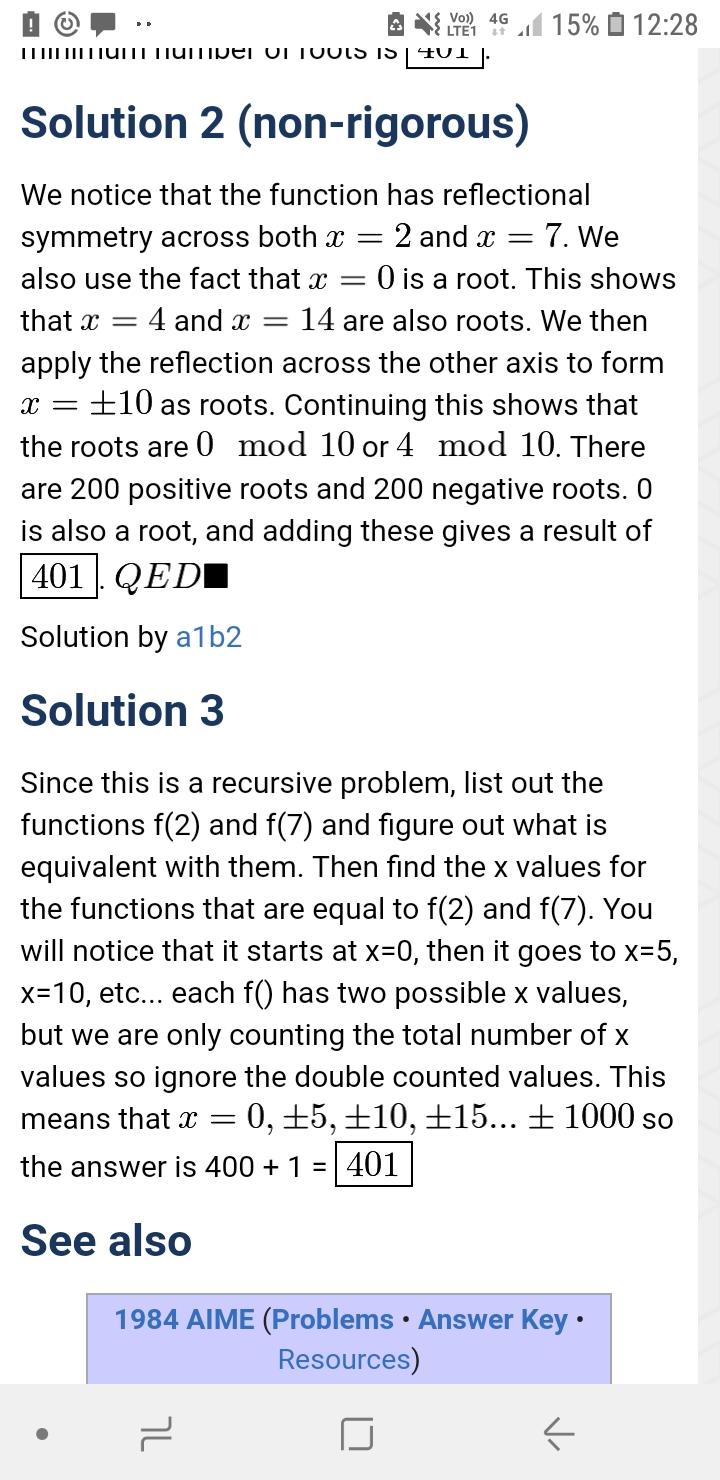- This topic has 2 replies, 3 voices, and was last updated 6 years ago by
 Agamdeep Singh.
Agamdeep Singh.
- AuthorPosts
- June 12, 2019 at 4:58 am #29180
 SARVESH SATHISHParticipant
SARVESH SATHISHParticipantI have seen the solution that was posted in AoPS but I'm still unable to understand.
June 15, 2019 at 7:57 am #29248 Srijit MukherjeeParticipant
Srijit MukherjeeParticipantShow that 4 is a period of f(x) as f(2-x) = f(2+x), put 2-x = y and hence 2+x = 4+y; f(y) = f(4+y)
Show that 14 is a period of f(x) as f(7-x) = f(7+x),put 7-x = z and hence 7+x = 14+z; f(y) = f(14+z)
Now f(y) = f(4+y) = f(14+y). This implies that f(y) = f(10+y); i.e. 10 is period. (Put 10+y = t; do the same thing as above.)
So, we have got 4,14,10 as period. Now show that 6 is also a period.
So we have got 4,14,10,6 as periods. Now show 2 is also a period.
Actually what we are doing is that we are applying euclidean algorithm and reaching the gcd of (4,14). In fact you can show that if s and t are the periods of a function, then the gcd(s,t) is also the period and that is the best we can do under the given information.
Hence, the minimum period is 2 for the given function.
As f(0) = 0, hence due to the periodicity properties f(2) = f(4) =f(6) =... f(1000) = 0 and similarly for the negative side so there are at least 1001 roots.
June 16, 2019 at 12:31 pm #29265 Agamdeep SinghParticipant
Agamdeep SinghParticipantOn the website, the answer is 401

- AuthorPosts
- You must be logged in to reply to this topic.
